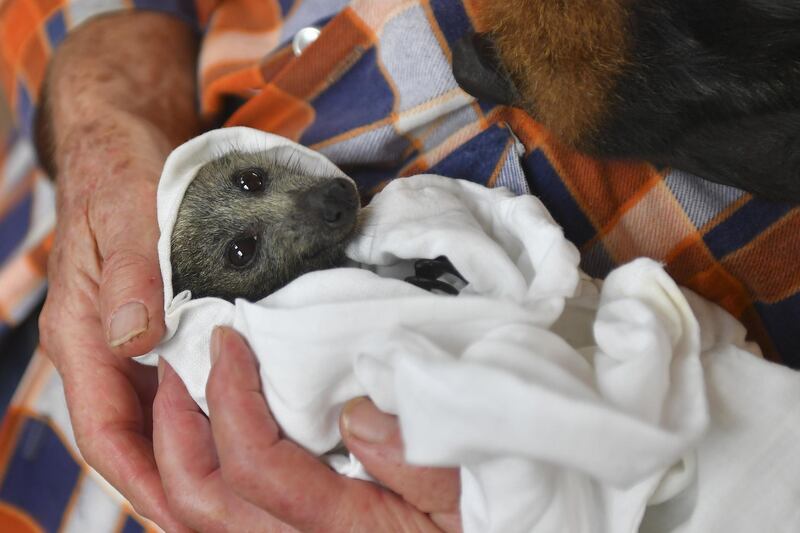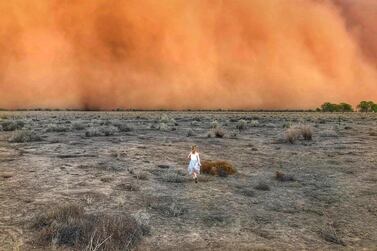Across vast tracts of Australian countryside in recent months, majestic natural hues have been replaced by ominous colours. Typically blue skies have glowed amber, green forests have turned to charcoal and colourful wildflowers have burnt black. The enormous, unprecedented bushfires that have ravaged the country have destroyed thousands of homes, displaced tens of thousands of residents, and taken the lives of at least 29 people.
Images have spread across the globe of Australians fleeing from encroaching walls of flames. They have run or driven or cycled to safety, in some cases having to take refuge on beaches, with fire all but driving them into the ocean. Countless lives have been saved by the fire warnings issued to communities by Australian authorities. Unfortunately, there is no way to warn the country’s fauna, which has been decimated by these uncontrollable blazes.
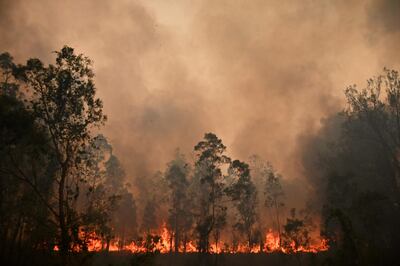
Of all the grim statistics to arise from these natural disasters, one stands out above all: the deaths of more than 1.25 billion animals. That number seems like a mistake at first glance. Once you realise it's correct, you can only wish it was an error. Among the animals to have perished are massive numbers of native species, including kangaroos, koalas, wallabies, wombats and echidnas.
In one of the most harrowing stories, New South Wales resident Rae Harvey earlier this month told media how her kangaroo sanctuary Wild2Free had been burnt to the ground. When a giant bushfire approached, Harvey had to abandon her 27-hectare property, where she cared for 100 kangaroos and wallabies. She returned to find most of them dead.
A Go Fund Me page was started to raise the money Harvey needed to reconstruct the sanctuary, and already it has raised more than Dh500,000. This generosity reflects how Australians recognise the crucial role played by such sanctuaries. Each year about 50 million hectares of land in Australia is burned by bushfires – which equates to an area six times the size of the UAE.
So many animals are injured during these blazes that the Australian government does not have the capacity to provide care for them all. Not even close. That is where people like Harvey step in. There are hundreds of wildlife sanctuaries like hers all across Australia – most are non-profit organisations that rely on donations from the public and the hard work of volunteers.
In my home city of Perth in Western Australia, I visited animal rehabilitation centre Kanyana Wildlife, which invites tourists to come and meet its animals, and even to help care for them in certain circumstances. While NSW and Victoria have received the brunt of bushfires so far this Australian summer, each year WA suffers hundreds of blazes. Some of the animals that survive these fires end up at non-profit sanctuaries such as Kanyana.
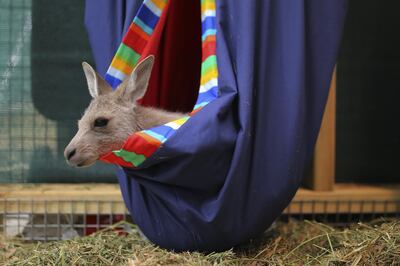
Having started 40 years ago as the most modest of wildlife rehabilitation centres, with injured birds being nursed in the laundry room of a Perth home, Kanyana has grown into an impressive and invaluable facility. Sited amid dense forest in Perth's east, it is staffed by passionate volunteers who look after injured, sick, orphaned or displaced wildlife.
The centre also offers courses in fauna first aid, which are open to the public, including tourists. Participants in these workshops learn how to safely catch and restrain animals, assess their health and administer first aid. The single-day courses, which involve groups of between five and 12 people, can be booked in advance at a cost of Dh900 per person, with the next scheduled workshops on Thursday, April 16 and Monday, July 13.
Kanyana chairwoman Helen Riley says tourists who want to visit the centre can also book tours via its website. This includes a two-hour Nocturnal Tour (Dh50 per person) to meet animals that are active at night, and the two-hour Discovery Tour (Dh40), where participants are taken inside Kanyana's animal hospital. The most prized of its visitor activities is the 30-minute Meet and Greet (Dh130), when participants can hold an echidna, a tawny frogmouth or a black cockatoo.
Tourists can also apply to volunteer at Kanyana, as long as they have the required certificates. But Riley urges prospective volunteers to first consider joining sanctuaries in the parts of NSW and Victoria devastated by the ongoing bushfires. She also warns that caring for injured animals can be extremely difficult. "It can be physically and emotionally very tiring for the committed volunteers and their families to maintain momentum for nursing animals back to health, daily husbandry and fundraising," Riley says.
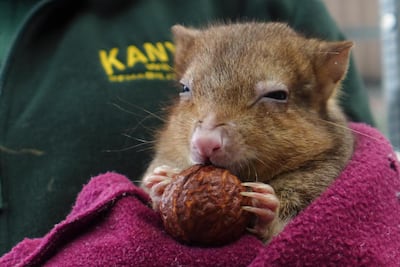
The animals affected by bushfires that are most commonly treated at Kanyana are bobtail lizards, quenda bandicoots and baby kangaroos. "Generally, there are few burns survivors," Riley says. "Smoke inhalation causes as much damage as the burns that can be seen on the outside."
When fire-affected animals arrive at Kanyana, vets assess the extent of their injuries and consider what treatment is possible. If their condition is too poor, the animals are euthanised. This is a gut-wrenching process being repeated again and again by staff at wildlife rehabilitation centres all across Australia. But these sanctuaries are now the last refuge for countless Australian animals.
